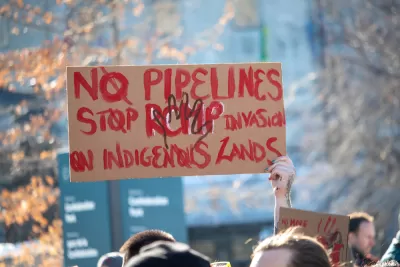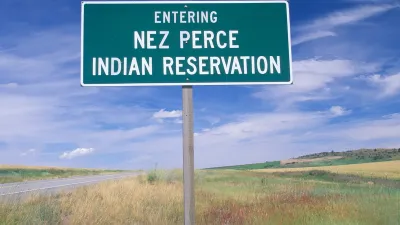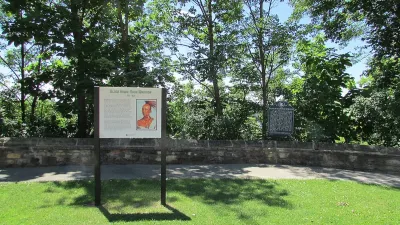A 500-year struggle has gained momentum in the days of social media.

An article by B. Toastie for High Country News explains the Land Back movement, which has been gaining prominence as the internet spreads the words. The Land Back movement, as the name clearly implies, goes beyond land acknowledgement, which has also gained mainstream traction in recent years.
There’s a simple explanation for the demands of the movement. To explain, the article poses the question: “What is the LandBack movement really asking for?” The answer is simple: “The land. Back.”
The movement won a major Land Back victory of the return of Blue Lake back to the Taos Pueblo in 1970, but a social media hashtag has raised awareness of the movement more into the mainstream. “In mid-2019, the hashtag gained traction in North America during the Tiny House Warriors’ blockade of the Trans Mountain Pipeline in unceded Secwepemc territory,” writes Toastie. “Soon after, the Yellowhead Institute, an Indigenous-led policy research center at Toronto Metropolitan University, released a report called Land Back that examined settler-colonialism at work in present-day Canada. In August 2020, the advocacy group NDN Collective launched landback.org with a brief LandBack Manifesto, followed by a campaign launch on Indigenous Peoples Day.”
According to the article, the appointment of Deb Haaland (Laguna Pueblo) as secretary of the Interior, and of Chuck Sams (Umatilla) as director of the National Park Service, the first Native people to hold either office is also furthering the cause.
The source article includes a lot more discussion and explanation.
FULL STORY: Questions about the LandBack movement, answered

Alabama: Trump Terminates Settlements for Black Communities Harmed By Raw Sewage
Trump deemed the landmark civil rights agreement “illegal DEI and environmental justice policy.”

Planetizen Federal Action Tracker
A weekly monitor of how Trump’s orders and actions are impacting planners and planning in America.

The 120 Year Old Tiny Home Villages That Sheltered San Francisco’s Earthquake Refugees
More than a century ago, San Francisco mobilized to house thousands of residents displaced by the 1906 earthquake. Could their strategy offer a model for the present?

LA’s Tree Emergency Goes Beyond Vandalism
After a vandal destroyed dozens of downtown LA trees, Mayor Karen Bass vowed to replace them. Days later, she slashed the city’s tree budget.

Sacramento Leads Nation With Bus-Mounted Bike Lane Enforcement Cameras
The city is the first to use its bus-mounted traffic enforcement system to cite drivers who park or drive in bike lanes.

Seattle Voters Approve Social Housing Referendum
Voters approved a corporate tax to fund the city’s housing authority despite an opposition campaign funded by Amazon and Microsoft.
Urban Design for Planners 1: Software Tools
This six-course series explores essential urban design concepts using open source software and equips planners with the tools they need to participate fully in the urban design process.
Planning for Universal Design
Learn the tools for implementing Universal Design in planning regulations.
Ada County Highway District
Clanton & Associates, Inc.
Jessamine County Fiscal Court
Institute for Housing and Urban Development Studies (IHS)
City of Grandview
Harvard GSD Executive Education
Toledo-Lucas County Plan Commissions
Salt Lake City
NYU Wagner Graduate School of Public Service





























